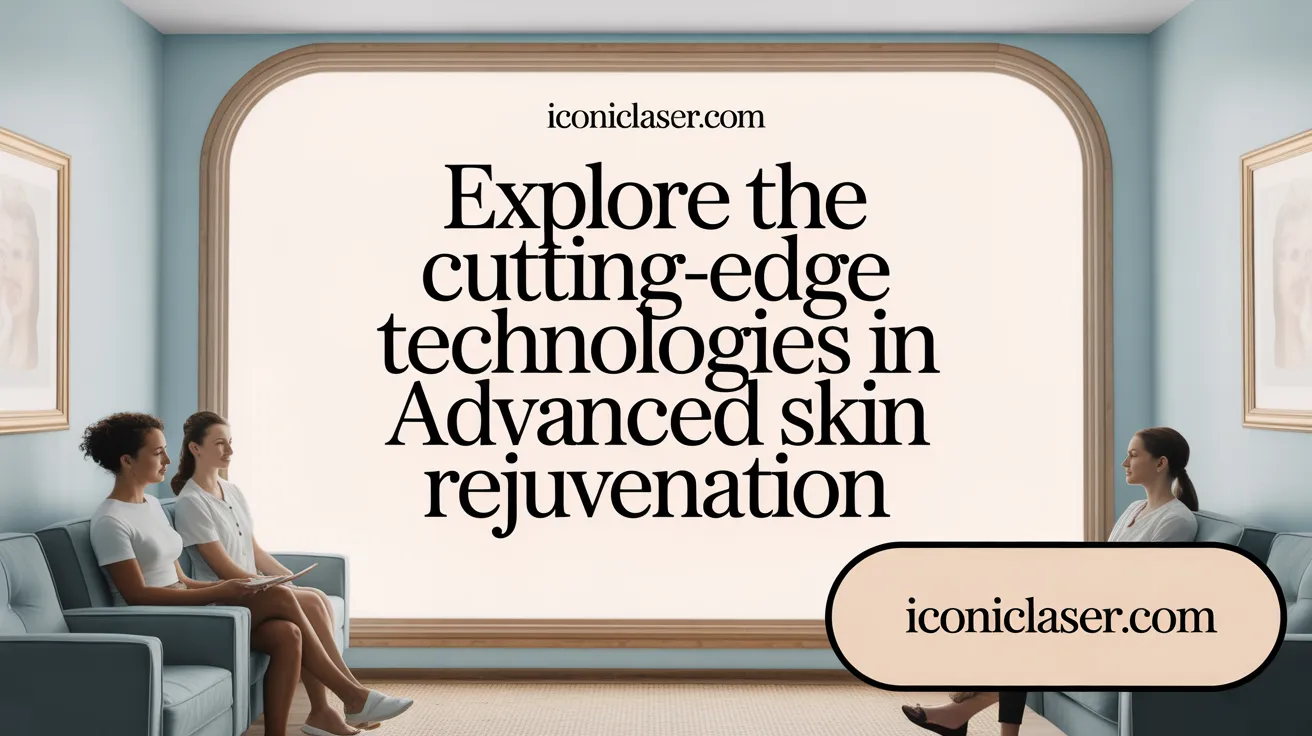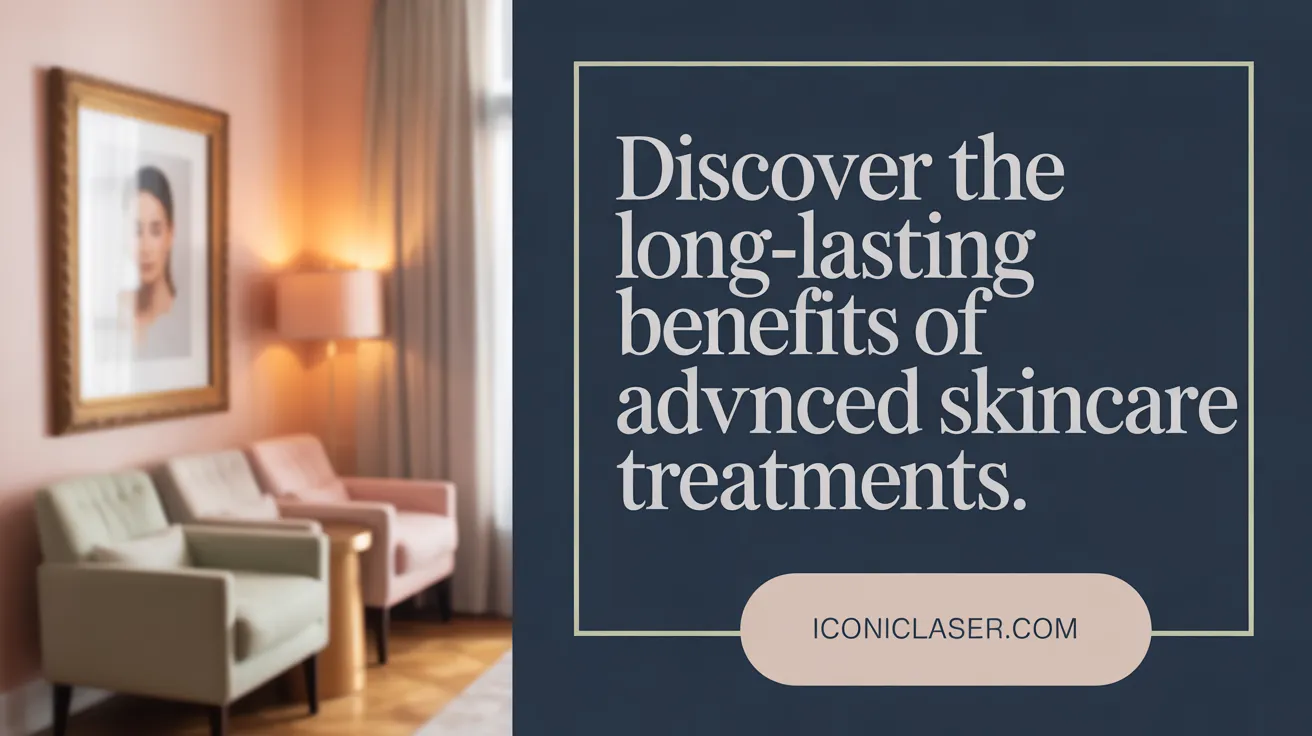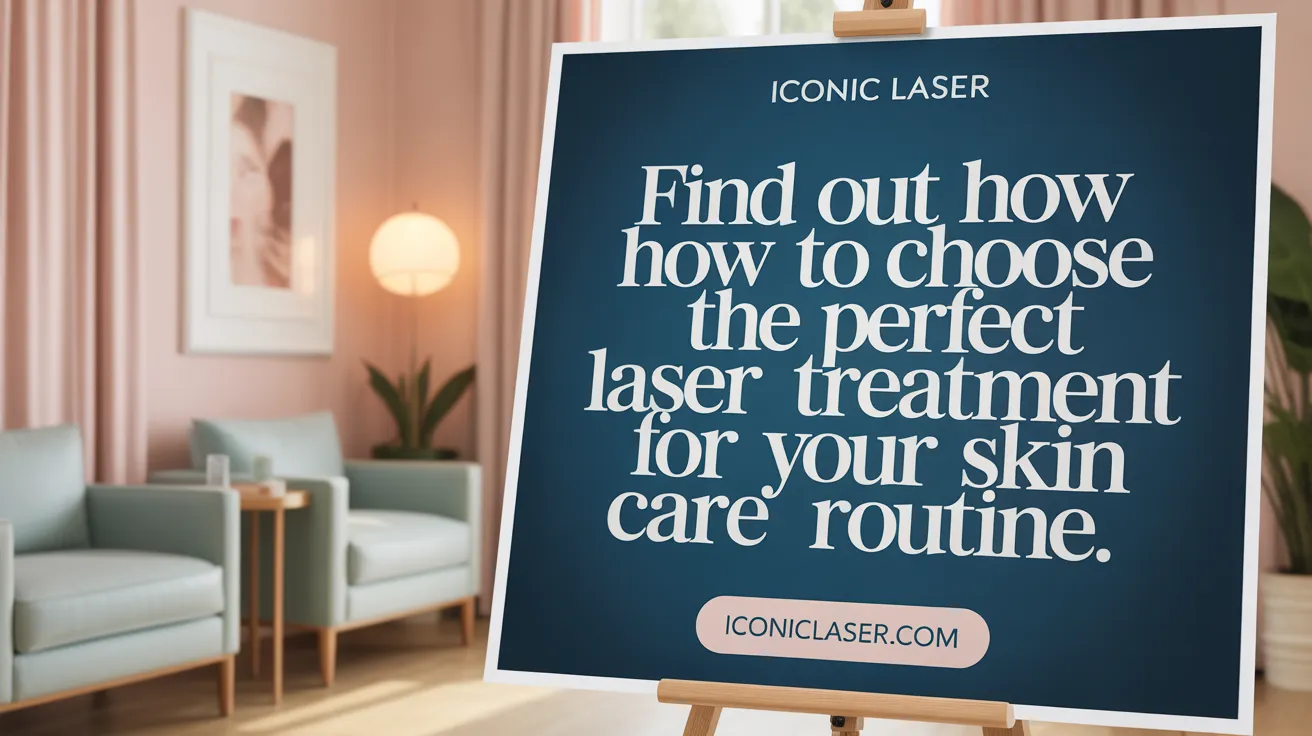Introduction to Skin Resurfacing Technologies
Skin resurfacing treatments have revolutionized the approach to combating visible signs of aging and skin imperfections. By employing advanced laser technologies, these procedures offer a pathway to rejuvenated, healthier-looking skin by targeting pigmentation irregularities, fine lines, wrinkles, scars, and uneven skin tone. This article guides readers through the complex landscape of pigment and laser resurfacing options, their benefits, risks, and how to choose the best approach tailored to individual skin concerns and goals.
Understanding Pigment and Laser Resurfacing Treatments
 Pigment and laser resurfacing treatments are popular cosmetic procedures designed to improve the overall appearance of the skin. These treatments utilize advanced laser technology to target damaged or irregular skin layers, promoting collagen growth and encouraging the development of new, healthier skin cells. The primary goals are to reduce signs of aging such as wrinkles and fine lines, diminish scars from acne or injuries, and correct pigmentation issues like sun spots or age spots.
Pigment and laser resurfacing treatments are popular cosmetic procedures designed to improve the overall appearance of the skin. These treatments utilize advanced laser technology to target damaged or irregular skin layers, promoting collagen growth and encouraging the development of new, healthier skin cells. The primary goals are to reduce signs of aging such as wrinkles and fine lines, diminish scars from acne or injuries, and correct pigmentation issues like sun spots or age spots.
There are three main categories of laser treatments used in skin resurfacing. Ablative lasers, such as CO2 and Erbium lasers, work by removing the outer skin layers, which can lead to more significant improvements but require longer recovery times. Non-ablative lasers heat the underlying skin tissue without damaging the surface, resulting in gentler procedures with minimal downtime. Fractional lasers, a variation common to both ablation types, create tiny, controlled columns of laser energy that stimulate collagen production while allowing quicker healing and fewer side effects.
These treatments are widely used for skin rejuvenation and pigmentation correction. They can address uneven skin tone, sun damage, scars, and fine lines, and are suitable for various skin types. Multiple sessions are often necessary to achieve optimal results, and proper post-treatment care — including sun protection and moisturizing — is crucial for healing and longevity of the outcomes. Overall, pigment and laser resurfacing treatments offer a versatile approach to restoring smooth, even, and youthful skin.
Categories and Technologies of Laser Resurfacing
 Laser resurfacing procedures are classified into three main categories based on how they treat the skin: ablative, non-ablative, and fractional lasers.
Laser resurfacing procedures are classified into three main categories based on how they treat the skin: ablative, non-ablative, and fractional lasers.
Ablative lasers, such as CO2 and erbium, work by vaporizing the outermost layers of damaged skin, promoting collagen growth and revealing a smoother surface. These are highly effective for deep wrinkles, scars, and significant sun damage but involve a longer recovery period, typically requiring about two weeks.
Non-ablative lasers, including pulsed dye, Nd:YAG, and IPL, heat the underlying skin tissue without removing the surface layer. They stimulate collagen production gradually, producing more subtle improvements. These treatments usually have minimal downtime and are suited for mild to moderate skin concerns.
Fractional lasers can be either ablative or non-ablative. They deliver laser energy in tiny, targeted columns called microthermal zones, which treat only portions of the skin at a time. This approach enhances healing, reduces side effects, and often requires multiple sessions for optimal results.
Various laser types and technologies are used in skin resurfacing. The CO2 laser, emitting at 10,600 nm, is highly effective for deep skin issues, vaporizing water in the tissue to stimulate regeneration. Erbium lasers, operating at 2,940 nm, are more precise and cause less thermal damage, suitable for fine lines and superficial scars. Nd:YAG lasers, at 1,064 nm, penetrate deeply and are often used for darker skin types or vascular lesions.
Other systems include pulsed dye lasers targeting vascular concerns, IPL devices that address pigmentation and redness, and advanced systems like Halo or Fraxel, which offer combined or selective modalities. A typical treatment heats or removes damaged skin layers, encouraging the growth of new, healthy tissue.
The underlying mechanism involves the absorption of laser energy by water, pigments, or blood vessels, leading to controlled tissue ablation or heating. This stimulates wound healing, collagen remodeling, and skin renewal, resulting in smoother, tighter, and more evenly toned skin.
The selection of a specific laser type depends on the patient's skin type, condition severity, and personal preferences regarding downtime and results. Always consult a qualified provider to choose the most suitable technology for your skin concerns.
Addressing Common Skin Concerns with Laser Resurfacing
What skin concerns can laser resurfacing treatments address?
Laser resurfacing is a versatile procedure capable of tackling numerous skin issues. It can effectively reduce fine lines and wrinkles, making the skin look smoother and younger.
Sun spots, age spots, and hyperpigmentation respond well to laser treatments, helping to even out skin tone and diminish discoloration.
Many types of scars, including acne scars, surgical scars, and scars from injuries or burns, can be visibly improved with laser therapy. By promoting collagen production, lasers help fill in scars and improve skin texture.
In addition, laser resurfacing boosts skin tightness and overall rejuvenation, enhancing skin firmness and elasticity. This combination of benefits makes laser treatment a popular choice for facial skin renewal.
Different lasers are suited for specific concerns. Ablative lasers remove damaged outer layers for more dramatic results, while non-ablative lasers stimulate collagen growth beneath the surface with minimal downtime.
Candidates should consult qualified dermatologists or cosmetic surgeons to determine the most appropriate laser type based on their unique skin type and concerns. Proper selection and treatment planning are crucial for achieving optimal, natural-looking results.
In summary, laser resurfacing can address a broad spectrum of issues—from superficial pigmentation to deeper wrinkles and scars—making it an effective tool for comprehensive skin improvement.
Benefits and Outcomes of Pigment and Laser Resurfacing

What are the benefits of pigment and laser resurfacing treatments?
Pigment and laser resurfacing procedures are highly effective in revitalizing the skin and addressing a variety of skin concerns. One of the main benefits is the notable improvement in skin texture and tone. These treatments help to smooth out rough skin, reduce fine lines, and create a more even skin color, leading to a healthier, more youthful appearance.
They are particularly good at diminishing pigmentation issues, including sun spots, age spots, and uneven skin discoloration caused by sun damage or melasma. This results in a clearer, brighter complexion.
Additionally, laser resurfacing stimulates collagen production in the deeper skin layers. Collagen is essential for maintaining skin firmness, elasticity, and overall skin structure. Increased collagen helps to tighten the skin, reduce sagging, and improve its resilience.
The rejuvenation effects of these treatments are often long-lasting. With proper skin care and sun protection, the results can maintain for years, and some procedures also help prevent future skin aging by encouraging continuous collagen growth.
Different laser types, such as ablative, non-ablative, and fractional lasers, allow customization based on individual skin conditions and goals. These options minimize heat damage, speed up healing, and reduce the risk of side effects, making laser resurfacing a safe choice for many.
In summary, pigment and laser resurfacing treatments deliver a comprehensive approach to skin renewal. They enhance skin appearance, boost confidence, and contribute to healthier, more resilient skin over the long term.
Safety, Risks, and Potential Side Effects
What safety considerations, risks, and potential side effects should be considered with laser resurfacing treatments?
Laser resurfacing treatments are popular for their ability to improve skin texture, reduce wrinkles, scars, and sun damage. However, like all medical procedures, they carry certain safety considerations and potential risks.
One of the most common side effects immediately following treatment is skin redness and swelling. Patients often experience irritation, peeling, mild discomfort, and sensitivity for several days to weeks. These symptoms are typically temporary and resolve as the skin heals.
More serious risks include pigmentary changes such as hyperpigmentation (darkening) or hypopigmentation (lightening), which are more common in individuals with darker skin tones. Proper laser selection tailored to skin type and careful sun protection can reduce these risks.
Infection is another possible complication, especially if post-treatment wound care instructions are not followed. Bacterial or viral infections, including herpes simplex virus reactivation, can occur. Patients prone to cold sores should take antiviral medication beforehand.
Scarring is a rare but significant concern, particularly if the procedure is not performed by an experienced provider or if post-care guidelines are ignored. Individuals with a history of keloids or hypertrophic scarring should discuss this with their clinician.
Special populations require additional caution. Skin of color patients and those with autoimmune conditions, recent radiation therapy, or a history of skin cancer need thorough evaluation before proceeding.
Ensuring the treatment is performed by a qualified, experienced professional—preferably a board-certified dermatologist or cosmetic surgeon—is crucial. Proper laser settings, technique, and patient selection are vital to minimize adverse outcomes.
Post-procedure care focuses on protecting the skin from sun exposure, keeping the skin moist with ointments, and avoiding harsh or irritating products. Adherence to these guidelines supports safe healing and optimal results.
In summary, while laser resurfacing is generally safe when performed properly, understanding the risks and implementing appropriate precautions are essential for a safe and successful outcome.
Personalizing Treatment: Factors Influencing Laser Resurfacing Choices
What factors influence the choice of laser resurfacing treatment for an individual?
Deciding on the most suitable laser resurfacing treatment involves a careful evaluation of several important factors. First, the individual's skin type and tone are vital considerations. For example, lighter skin types (Fitzpatrick I-III) are generally more suited for aggressive treatments like deep CO2 lasers, which provide more dramatic results. Conversely, darker skin tones (Fitzpatrick IV-VI) require gentler options, such as Erbium lasers or non-ablative fractional treatments, to minimize the risk of pigmentation changes.
The severity and specific type of skin concerns also influence treatment selection. Whether addressing fine lines, deeper wrinkles, acne scars, age spots, or uneven pigmentation, each condition may respond better to particular laser modalities. For superficial issues, non-ablative lasers like Halo or MOXI may suffice, offering minimal downtime. For deeper scars or significant sun damage, ablative options like CO2 or Erbium lasers are more effective but come with longer recovery periods.
Patient health status and lifestyle factors are also crucial. Those with certain medical conditions, a history of cold sores, or on medications like isotretinoin need special considerations. Lifestyle elements, such as the ability to avoid sun exposure during healing, influence the decision-making process to promote optimal recovery and results.
Desired outcomes and tolerance for downtime significantly shape choices. Patients seeking quick, minimal recovery treatments might prefer non-ablative or fractional options, while those aiming for more comprehensive rejuvenation may accept longer healing times for deeper laser treatments.
Lastly, the role of consultation with qualified specialists cannot be overstated. Experienced dermatologists or cosmetic surgeons assess the individual’s unique skin characteristics, discuss realistic expectations, and customize treatment plans accordingly. They also provide important education about potential risks and post-treatment care, ensuring safety and effectiveness.
In essence, selecting the right laser resurfacing treatment is a personalized process that balances skin concerns, health profile, aesthetic goals, and lifestyle, all guided by expert medical advice. Combining this comprehensive assessment with technological options allows for tailored treatments that maximize results while minimizing risks.
Comparing Different Laser Resurfacing Procedures: Advantages and Limitations
Laser resurfacing treatments come in various forms, each designed to tackle specific skin concerns with distinct advantages and trade-offs.
Ablative lasers, like CO2 and Erbium, are highly effective for deep wrinkles, scars, and significant sun damage because they remove the outer skin layers entirely. This results in more dramatic improvements and longer-lasting outcomes. However, these procedures involve longer recovery times—often up to two weeks—and carry higher risks such as pigmentation changes, scarring, and infections.
Non-ablative lasers heat the underlying skin tissue without removing the top layers. They are gentler, with minimal downtime, making them appealing for individuals seeking mild rejuvenation or maintenance. The trade-off is the need for multiple sessions to achieve noticeable results, which can be inconvenient and may not be as effective for severe skin issues.
Fractional lasers offer a balanced approach by creating tiny columns of thermal injury that stimulate collagen production while sparing surrounding tissue. This technique promotes quicker healing and reduces side effects compared to full-field ablative lasers. Fractional treatments can be customized to suit different skin types and concerns, providing a middle ground between efficacy and recovery.
Some popular devices in these categories include the fractional CO2 laser, Erbium lasers, and non-ablative options like the Halo hybrid laser and MOXI. The choice of device and procedure depends on individual factors such as skin type, the severity of skin problems, and personal preferences regarding downtime.
In summary, ablative lasers excel at offering comprehensive, long-term improvements but require longer healing periods and entail higher risks. Non-ablative lasers provide a safer, more convenient option with less downtime but might need multiple treatments for optimal outcomes. Fractional lasers strike a balance, delivering effective results with manageable recovery times, making them suitable for a broad range of skin conditions and patient needs.
Preparing for and Caring After Laser and Pigment Resurfacing

How should one prepare for and care for the skin after laser and pigment resurfacing treatments?
Preparation is crucial to ensure safety and optimal results from laser and pigment resurfacing procedures. Before treatment, patients should avoid tanning or heavy sun exposure for at least four weeks to prevent hyperpigmentation or other adverse effects. Applying a broad-spectrum sunscreen with SPF 30 or higher daily helps protect the skin.
Discontinuing medications that can increase sun sensitivity, such as doxycycline or minocycline, at least 72 hours prior to the procedure is advised. Patients with a history of herpes simplex or shingles should inform their provider, as antiviral medications might be prescribed to prevent outbreaks.
Post-treatment care is equally important. Keeping the treated area moist with ointments like petroleum jelly or specialized products such as Alastin helps facilitate healing. Covering wounds with sterile bandages can protect the skin from infection and friction.
Patients are advised to avoid activities that cause excessive sweating, heat exposure, or trauma for at least 1-2 weeks. Gentle cleansing with mild, non-abrasive cleansers prevents irritation, and it’s vital not to pick or peel crusts to avoid scarring.
Sun protection remains critical even after healing; wearing protective clothing and continuing to apply broad-spectrum sunscreen prevents pigmentation changes while the skin recovers.
Following your healthcare provider’s instructions regarding medications, pain management, and activity restrictions is essential for a smooth recovery. This tailored guidance helps minimize side effects, promote healthy skin regeneration, and achieve the best possible aesthetic outcome.
Guidance for Selecting the Right Laser Resurfacing Treatment

How can individuals decide which laser resurfacing treatment is appropriate for their specific needs?
Choosing the right laser resurfacing treatment depends on a thorough understanding of your skin concerns and realistic goals. For instance, if you’re seeking to reduce fine lines and improve skin tone with minimal downtime, non-ablative options like the Halo hybrid fractional laser or MOXI may be suitable. Conversely, for deep wrinkles or significant sun damage, more aggressive treatments such as CO2 ablative lasers or Fraxel Dual might be recommended.
A critical step is consulting with a qualified dermatologist or skincare specialist. These professionals will evaluate your skin type, severity of damage, medical history, and personal preferences. They guide you through understanding the distinctions among various laser types:
| Laser Type | Typical Use | Recovery Time | Potential Risks | Suitability |
|---|---|---|---|---|
| Ablative (e.g., CO2, Erbium) | Deep wrinkles, scars, severe sun damage | 1-2 weeks | Swelling, redness, risk of pigmentation changes | Suitable for moderate to light skin types when performed by experienced providers |
| Non-ablative | Mild to moderate skin issues | Minimal or no downtime | Less risk; may require multiple sessions | All skin types, especially darker skin |
| Fractional | Moderate to deep concerns; combines ablation and non-ablative benefits | Varies (few days to weeks) | Slightly higher risk of uneven tone | Suitable for various skin types with reduced healing time |
Understanding these differences allows you to weigh the benefits against potential risks and downtime. Your provider can recommend a tailored treatment plan that considers your specific concerns, skin type, lifestyle, and expectations.
It’s crucial to set realistic goals and recognize that multiple sessions might be necessary for optimal results. Treatment plans should be personalized, with detailed pre- and post-care instructions to maximize safety and effectiveness.
In summary, deciding on an appropriate laser resurfacing treatment involves evaluating your skin issues, consulting with and trusting a qualified specialist, and understanding the options available. This careful approach ensures you achieve rejuvenation safely while meeting your aesthetic goals.
Emerging Technologies and Combination Approaches in Skin Resurfacing
Hybrid fractional lasers combining ablative and non-ablative effects
Recent advances have introduced hybrid fractional lasers, such as the Halo laser, which blend ablative and non-ablative treatments. These devices can deliver micro-thermal zones of energy that target both surface and deeper skin layers simultaneously. This approach enhances skin rejuvenation, improves texture, reduces scars, and minimizes downtime compared to traditional methods. Patients benefit from substantial results with less discomfort and shorter recovery periods.
Integration of radiofrequency, PRP, and microneedling with lasers
Innovative combination treatments are increasingly popular. Incorporating radiofrequency (RF) energy with laser therapy further stimulates collagen production and tightens skin. Platelet-rich plasma (PRP) injections used alongside laser procedures enhance healing and promote new collagen growth. Microneedling, when combined with laser therapy, creates controlled micro-injuries that amplify the skin’s natural repair process. These combined approaches yield notable improvements in scars, wrinkles, and laxity, offering comprehensive skin rejuvenation.
Advancements in device precision and safety for diverse skin types
Technology developments focus on enhancing device precision to improve safety across all skin tones. Modern lasers utilizing fractional technology and adjustable wavelengths significantly reduce risks such as hyperpigmentation or hypopigmentation, especially in darker skin. Innovations in cooling techniques and real-time skin monitoring further improve treatment safety and comfort, making these procedures accessible and effective for a wider patient demographic.
Potential for topical drug delivery enhancement with laser-treated skin
A promising frontier involves enhancing topical medication absorption through laser-created microchannels. Ablative fractional lasers can temporarily increase skin permeability, allowing better delivery of drugs such as sunscreens, anti-aging agents, or skin cancer treatments. This synergy opens new possibilities for combined therapies, maximizing treatment efficacy and skin health.
| Technology / Approach | Benefits | Considerations | Typical Recovery Time |
|---|---|---|---|
| Hybrid fractional lasers | Combines benefits of ablative and non-ablative | Requires specialized equipment, cost | 1-3 days for mild, 7+ for deep treatments |
| RF and laser integration | Boosts collagen, skin tightening | Needs experienced provider | No downtime to a few days |
| PRP with lasers | Accelerates healing, improves collagen | Must be done in clinical setting | Same as laser treatment |
| Micro-needling + laser | Enhances collagen, scar reduction | Multiple sessions needed | Few days |
Staying abreast of these technological innovations allows clinicians to tailor treatments that are safer, more effective, and suitable for diverse skin types. As the field evolves, combining modalities holds promise for achieving superior outcomes with reduced risks.
Making Informed Choices for Radiant Skin
Navigating the myriad of pigment and laser resurfacing options can be overwhelming, but understanding the principles behind each treatment type, their benefits, risks, and suitability is essential for achieving optimal skin rejuvenation. Technological advancements have expanded the possibilities to address various skin concerns safely, even for darker skin tones. However, the cornerstone of success lies in personalized care—consulting with qualified professionals who assess individual needs and guide through preparation, treatment, and aftercare. With informed decisions and expert guidance, laser resurfacing can effectively restore youthful vibrancy and confidence to your skin.
References
- Skin Resurfacing Treatments | ABCS
- Laser Skin Resurfacing
- Which Laser Resurfacing Treatment Is Right for Me?
- Current Laser Resurfacing Technologies: A Review that ...
- Three Degrees of Laser Resurfacing for Rejuvenated Skin
- Your Ultimate Guide to Laser Skin Resurfacing Techniques
- The Best Laser Skin Resurfacing: 7 Options for Radiant Skin
- The Ultimate Guide to Laser Resurfacing
